Damp proofing and waterproofing can be perceived as somewhat similar and in a sense, they are. But the terms cannot be used interchangeably due to the significant differences between them. But what are these differences?
Damp proofing refers to protection against moisture whereas waterproofing can prevent water penetration even when there’s hydrostatic pressure is present. The options differ in material, durability, thickness, cost, and resistance.
If you want details about this damp proofing vs waterproofing comparison, make sure to read the entire article.
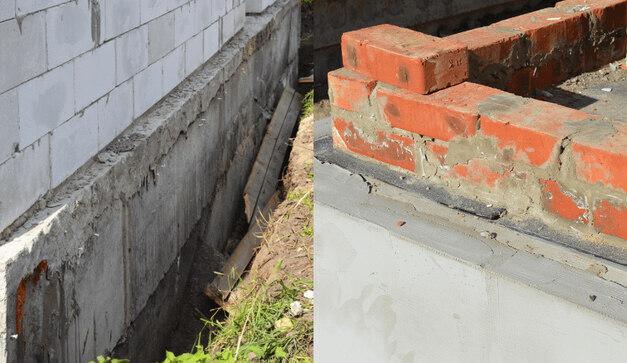
Damp Proofing Vs Waterproofing: Basic Differences
| Aspect | Damp Proofing | Waterproofing |
|---|---|---|
| Definitions | Prevents dampness or moisture | Strong protection from water and moisture |
| Purpose | Protects from soil moisture penetration | Protects from water and hydrostatic pressure |
| Material | Tar or unmodified asphalt | Bentonite, rubberized asphalt, crystallization products, etc. |
| Resistance | Limited resistance to hydrostatic pressure | Resistant to hydrostatic pressure |
| Stability | Comparatively less stable | More stable and durable |
| Cost | Generally less costly | Typically more costly, but worth the result |
As mentioned above, there are several differences between damp proofing and waterproofing. Going through them in detail will help you understand each option with more clarity. Let’s check out the comparison points in detail.
Definitions
As the name suggests, damp proofing prevents dampness or moisture. This is particularly suitable when you want to protect your home from the soil’s moisture. It’s a preventive layer that prevents moisture from penetrating your home.
Waterproofing on the other hand provides strong protection from water, not only moisture or water vapor. That means, even if there’s hydrostatic pressure present in the soil, waterproofing will protect your home from it.
Material
The materials used for damp proofing and waterproofing are different too. Damp proofing is usually done using tar or unmodified asphalt. Waterproof coatings, on the other hand, can be done using bentonite, rubberized asphalt, crystallization products, Urethane, Butyl, etc.
Resistance
When comparing resistance, it refers to the resistance to hydrostatic pressure. In areas where there is hydrostatic pressure present, damp proofing will not last long. On the contrary, you can easily rely on waterproofing regardless of the pressure.
Stability
As you can already guess, waterproofing is comparatively more stable than damp proofing. So, if you are measuring durability, waterproofing will have an advantage over damp proofing.
Cost
The cost depends on the service provider and the material you are choosing. However, waterproofing is usually a bit more costly than damp proofing. Nonetheless, it can be said without a doubt that the price is certainly worth the result.
Damp Proofing Vs Waterproofing: Advantages And Disadvantages
Now that you know what the basic differences between these two are, let’s get to the advantages and drawbacks of waterproofing and damp proofing.
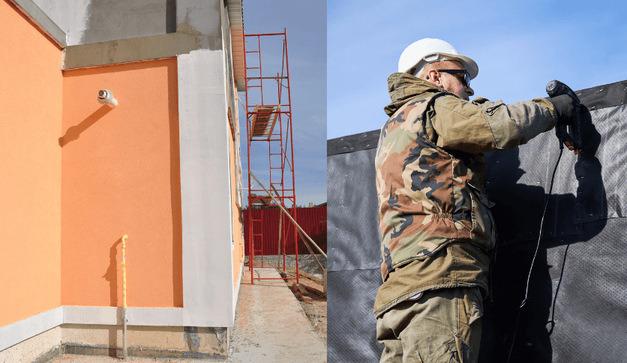
Damp Proofing
Advantages:
Damp proofing can be beneficial for someone looking for light protection against moisture. This is a comparatively cheap option and provides a decent barrier against moisture.
Disadvantages:
It can not protect your home against hydrostatic pressure. When you want hardcore protection against water, this is not the option to go for. In addition, it can’t cover cracks and is comparatively less durable.
Waterproofing
Advantages:
Waterproofing lasts longer than dampproofing. It’s stable and can provide protection against water and other liquids even in the presence of hydrostatic pressure. So, it’s suitable for all areas.
There are several options available when it comes to material. Besides, the installation of waterproof coating is also more convenient.
Disadvantages:
Waterproofing is comparatively more expensive than dampproofing.
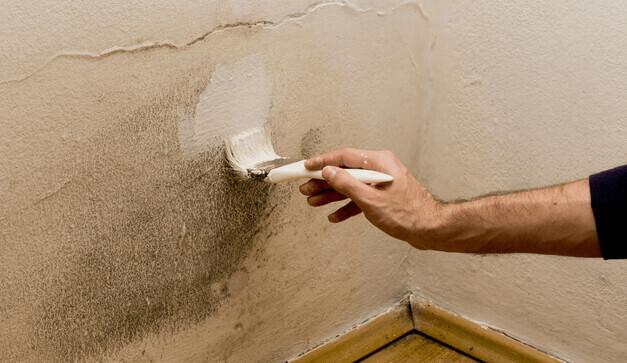
Damp Proofing Vs Waterproofing: Summary
Let’s take a look at the table below to get a summary of the differences between damp proofing and waterproofing.
| Subject Of Comparison | Damp Proofing | Waterproofing |
| Function | Protection against moisture | Protection against water and other liquids |
| Material | Unmodified asphalt | Bentonite Rubberized asphalt Crystallization products Urethane Butyl |
| Cost | $3 to $6 per square foot | Long-lasting protection Stable in fluctuating temperatures Durable Several material options cover cracks |
| Durability | Comparatively less durable | Comparatively more durable |
| Cured Thickness | Less than 10 mils | Minimum 40 mils |
| Crack Coverage | Close to none | Up to 1/16 inches |
| Resistance | Does not resist water indefinitely when hydrostatic pressure is present | Permanently prevent water damage even when hydrostatic pressure is present |
| Advantages | Long-lasting protection Stable in fluctuating temperature Durable Several material options cover cracks | Long-lasting protection Stable in fluctuating temperatures Durable Several material options cover cracks |
| Disadvantages | Not durable Installation can be complicated Cannot cover cracks Brittle in low temperatures | Comparatively expensive |
Damp Proofing Vs Waterproofing: Which One Is Better?
You may have already come to a conclusion by reading this article. In almost every aspect, waterproofing is the winner over damp proofing. But still, many people choose to go for damp proofing. Why is that?
The first reason is of course the price. Damp proofing will save you a lot of bucks. But take a moment and think about it. Are you really saving money? When you choose something as short-term as dam proofing, you raise the possibility of spending money on the same field again after a few days. This is not saving money. On the contrary, it costs you more money.
Waterproofing can not only save you money of redoing the whole thing but also solve most problems of your building. Cracks, moisture, and water leakage are all problems that can be sorted out only by choosing a waterproofing solution.
Nonetheless, it’s very important that you invest your money in the right place. There will be a lot of expensive options for damp proofing. Similarly, you may find a lot of cheap options in waterproofing. However, they will not meet your expectations.
So, do it right the first time. Avoid the hassles of redoing the same thing again. Take your time and choose a trustworthy service provider to do this for your house. This way you can not only prevent future expenses but also protect your home using the best way possible.
Final Words
There you have it. Everything you needed to know about damp proofing vs. waterproofing. Hopefully, this article will make your decision much easier. Even if you are not using any of these options right now, it’s always better to keep your knowledge up to date.
Knowing your options is easy. But when it comes to implementing them, people may make mistakes. The primary reason is always the expense. But when you are thinking about the future, you are actually saving money by investing in a high-quality option. So, never make your decision solely based on the price of a product, and take your time before selecting any option.
References
- https://www.wrmeadows.com/blog/waterproofing-vs-damp-proofing/#:~:text=In%20short%3A,all%20moisture%20and%20liquids%20out
- https://precast.org/2014/03/damp-proofing-vs-waterproofing-part-1/
- https://www.nerolac.com/blog/what-is-damp-proofing-and-difference-from-waterproofing

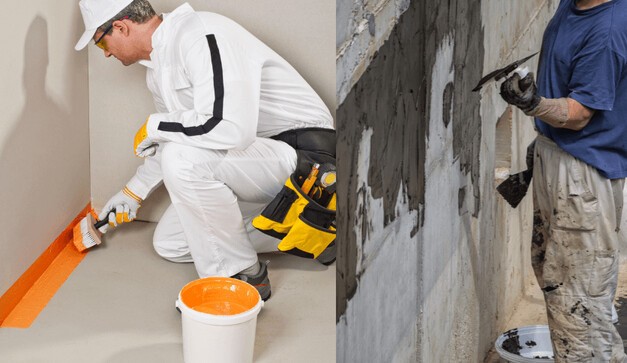
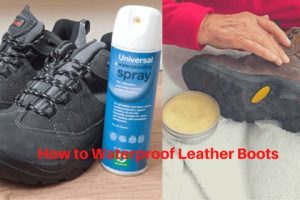

![Read more about the article Top 6 Best Printer For Avery labels In 2024 [Updated]](https://theconsumertips.com/wp-content/uploads/2021/02/Best-Printer-For-Avery-labels-300x144.jpg)